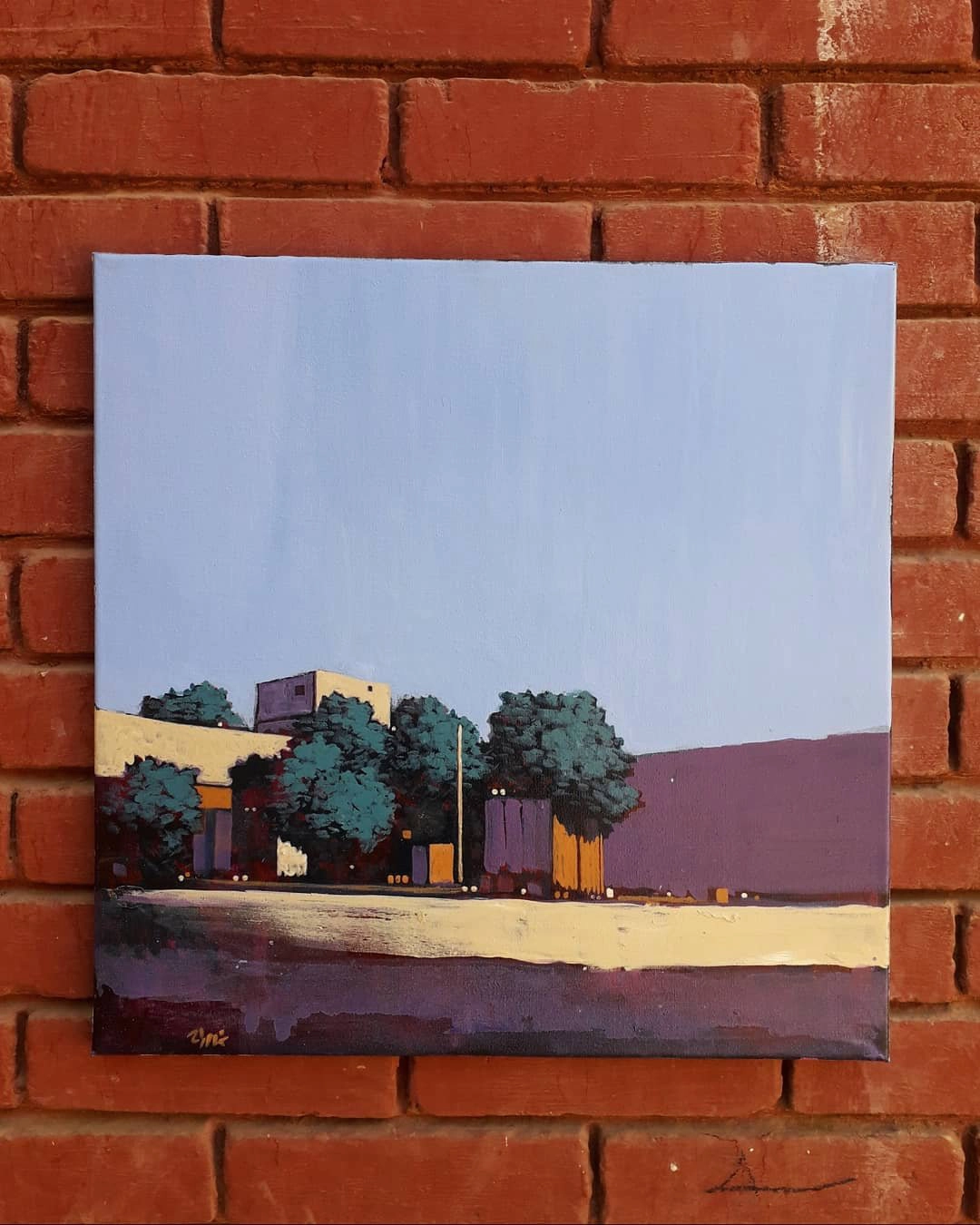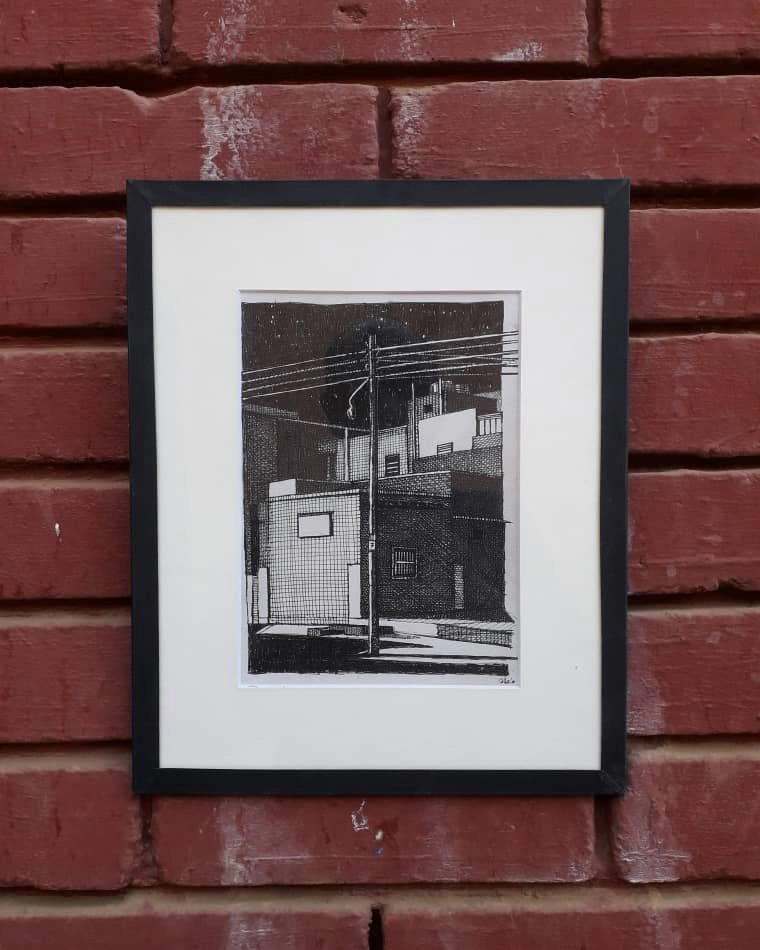Written by Mahasin Ismail
Our collective memory seems to categorise landscapes as something of the past. A nostalgic genre or a practice which has no place in today’s landmarks, which leaves the scene dominated by abstraction, installation, conceptualisation and minimalistic art. All we could think of are the romantic landscapes of John Constable or Claude Monet’s impressionism as a highlight of the genre.
Finite, a realistic depreciation of the world, classic, but maybe a bit boring, is what young and upcoming artists thought about. However, the opposite seems true, the contemporary landscape genre in which outdoor entertainment or natural scenery is depicted where the artist does not strive to obtain a pure naturalistic projection but rather to develop a contemporary perspective on the scene will never end.

One of the most talented contemporary landscape artists of his generation is Khalid Abdurahman, born in 1978 and currently working and residing in Khartoum, Sudan. Khalid is best known for his vivid, bold, vibrant, and daring colours in simple forms to create astonishing visual effects. The artist found timeless inspiration in urban architecture, rethinking the narrative potential of landscape painting.
Khalid’s highly recognisable visual language is known as “magical realism”. This resembles the narrative we create in our dreams, which often does not make any rational sense yet is never questioned. Painting in a naturalistic manner, influenced by large plains of colour, takes all over the canvas, reminiscent of the tradition of old masters painting using landscape to depict their scenes. Khalid takes a similar yet utmost contemporary manner as he paints from photographic material and memory.
Khalid crafted his artworks from combinations of familiar elements of our environment. However, Khalid ditched the realistic values and showed the colours he wanted to show and not the ones you see in nature. Colours no longer had a representational purpose. From rural houses and glimpses of urban buildings to religious tombs and ancient monumental shrines, Khalid can transform a deceptively simple landscape into a colourful and virtuous painting, adding blues, yellows, faded pinks and greens into his composition, attracting oneself to the nostalgic genre of landscape painting, illustrating it’s never-ending relevance in today’s art world.



Khalid examines the medium of painting, focusing strongly on image theory, collective memory and contemporary culture, as a horizon and atmospheric perspective of the yellow skyline became a key reference point in his paintings to start to behold and grasp his compositions. Another advantage to shed light on is the artist’s outstanding ability to switch between pastels, acrylic, pen and ink without affecting the quality of the final work, resulting in staggering and, most often, breathtaking masterpiece paintings.
Khalid says about his work:
I take long walks and get strongly affected by what I see in some parts of the city, or as some of our elders used to say, ( the cluster of hundreds of villages called Khartoum ). I have been taking these walks since childhood, but now I do it to collect raw material for my work, and I collect it in sketches, photographs and the ideas, feelings and memories I get through the process, then I take all that into the studio, and I start working on the final result, which usually comes out as a small pen and ink on paper, or medium-sized pastels or acrylics on paper, or relatively larger pieces with acrylics on canvas.
Where I live, and my relationship with it is the main subject I work on. It began naturally as I was doing works about surroundings, and later on, it became a deliberate choice to narrow my subject so I could have more room for experimentation in mediums and styles under one unifying theme. Sometimes, the focus is on my relationship to the place and the emotions it produces upon me; that’s when the work leans towards abstraction and is more interested in pure shapes and colours and sometimes I just illustrate what I see, and that is when it goes to the opposite direction, but most of the I attempt to take the middle way, and combine both in individual pieces, aiming at achieving a very personal expression that I can effectively communicate to people. Speaking of people, their total absence is another unifying aspect present in all these different works.
Artist bio
Khalid Abdelrahman was born in Khartoum in 1978 and has lived in it for all his life, except for short intervals, and he thinks that is the reason why the triad city, with all its natural scenery and architectural styles and details, occupies the largest part of his artistic output.
Khalid has always been fascinated by art and how the world is represented through it, so he started teaching himself about it and practised it recreationally since his childhood. In 2011, at the relatively late age of thirty-three, he began taking it seriously and started pursuing a career as a full-time artist, and since then, he has held three solo exhibitions at The French Cultural Centre and Aljunaid Cultural Centre, Sudan, and Art Council New Orleans, USA, and he also participated in several group exhibitions in South Africa, Kenya, Uganda, and a recent exhibition in New Orleans African American Art Museum.


About the writer
Mahasin is a widely sociable, outdoorsy 21-year-old art blogger who is driven by curiosity and fascinated by (People). Fangirling over art, American politics, and the hospitality industry may be an entrepreneur in an open journey quest for the meaning of Home.
